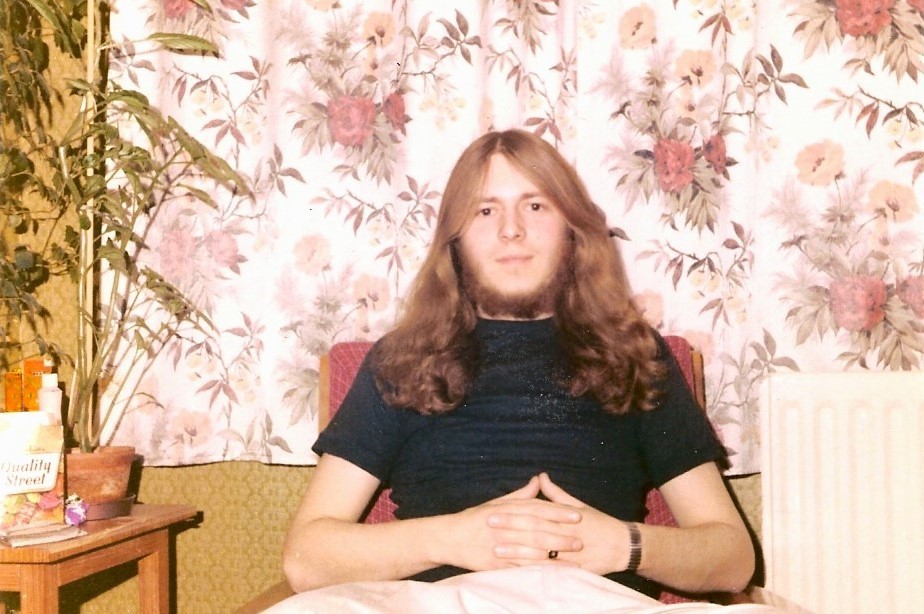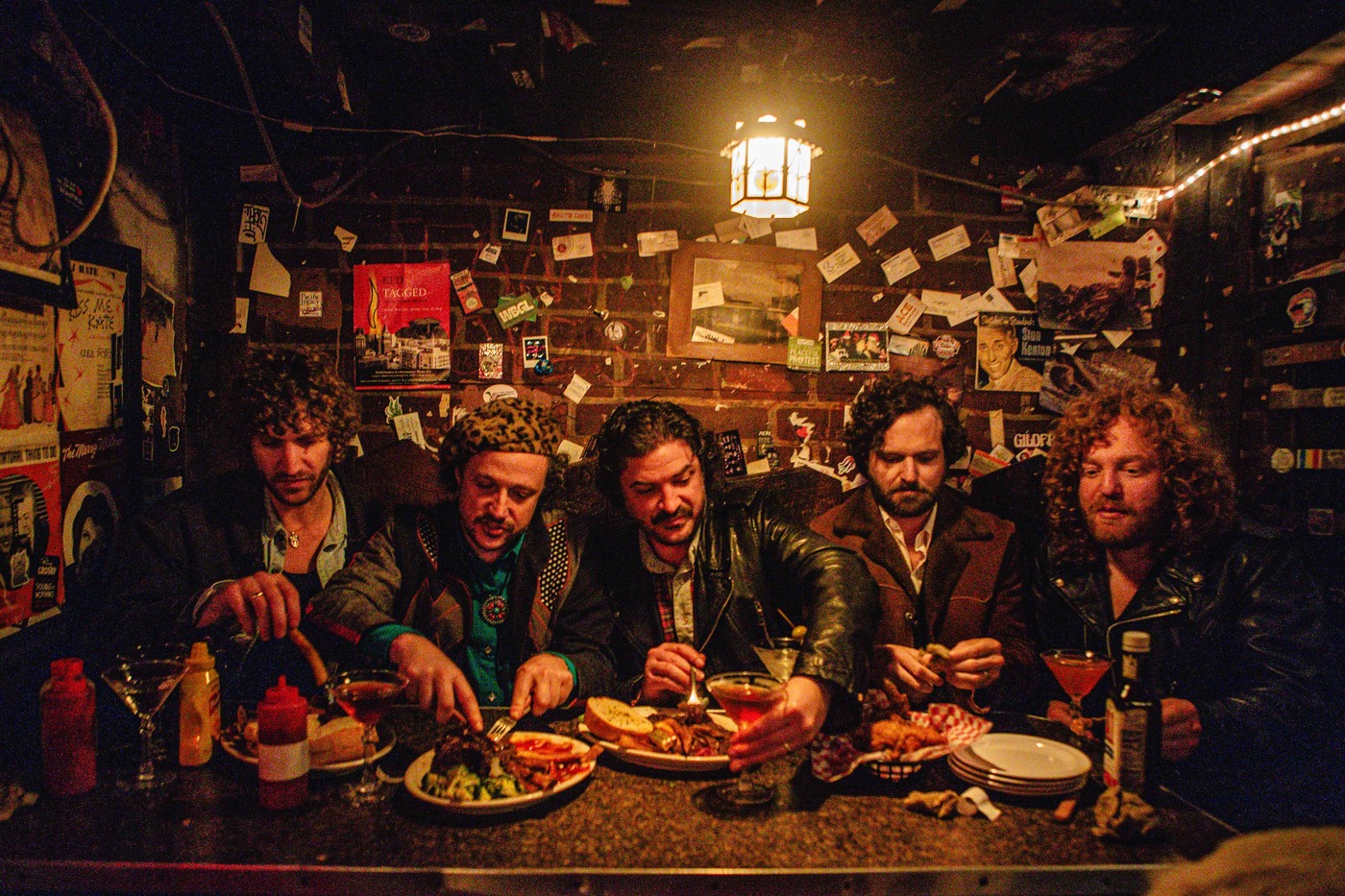Orang-Utan | Interview | Sid Fairman
Orang-Utan were in fact a London based band called Hunter, featuring vocalist Terry “Nobby” Clarke (of psych-pop legends Jason Crest), guitar players Mick Clarke and Sid Fairman, drummer and songwriter Jeff Seopardi and bass player Paul Roberts.
They recorded their sole album in 1971 at DeLane Lea studios. In a bizarre twist of events, their producers / managers ran with the tapes to the US, where they placed the album on Bell Records under a new band name: Orang-Utan, without telling any of the band members. A lost classic of blazing, early hard rock with minor psychedelic hangover vibes, a twin-guitar attack, and waves of fuzz/wah, along with powerful vocals. Legit reissue done in co-operation with the original band members was recently made by Guerssen.
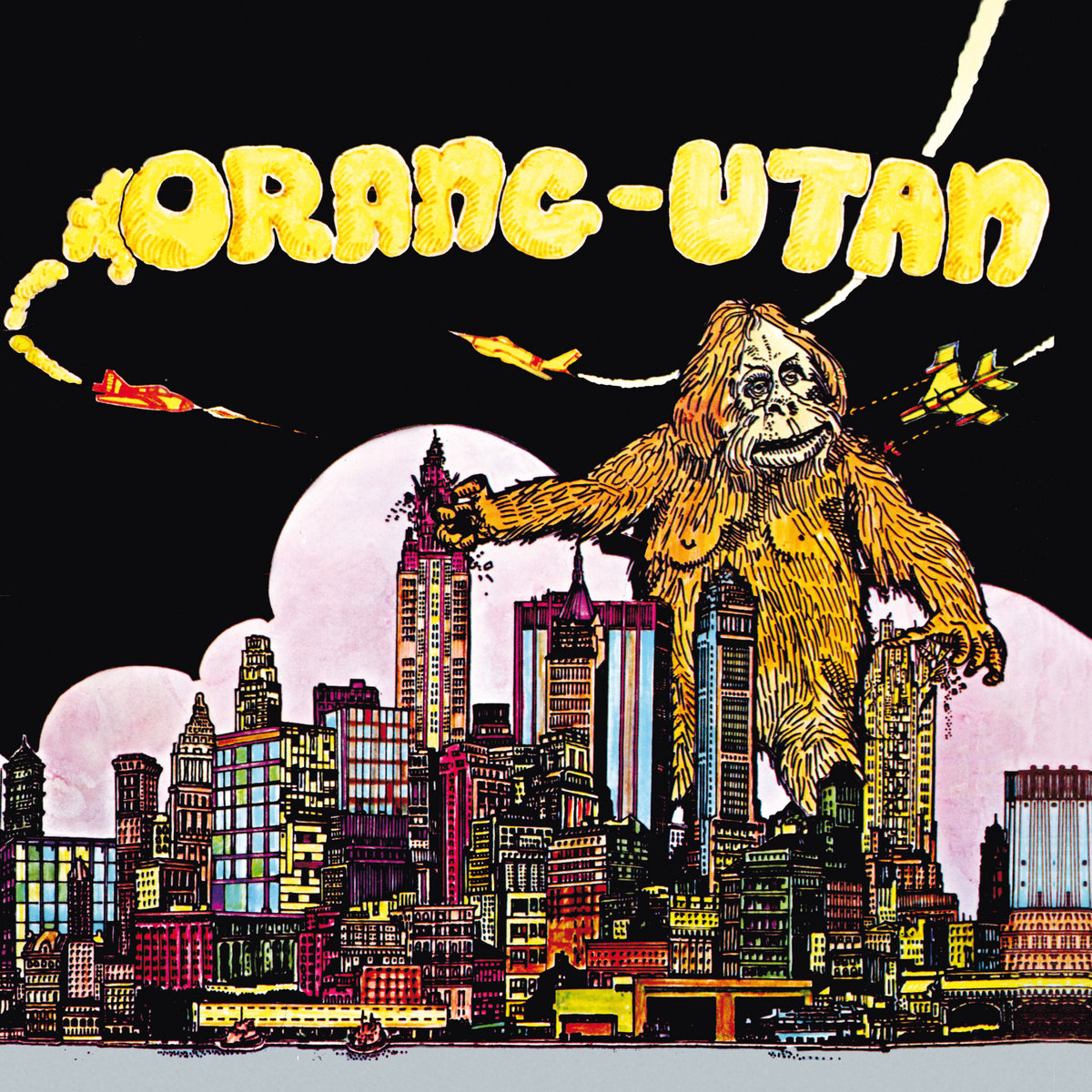
“Before the demise of Orang-Utan there was talk of us touring the United States supporting Led Zeppelin”
Where and when did you grow up? Was music a big part of your family life?
Sid Fairman: I grew up in the East End of London which was a rough and ready poor area. Music wasn’t a particularly big part of my upbringing. I remember family parties and get-togethers, which weren’t that often, usually consisting of somebody playing the piano and various people singing the songs. We also listened to the hit parade on the radio on Sunday evening’s. Other than that not very much, I think I was the first family member (other than the piano player) to show an interest in learning to play an instrument.
What was your upbringing like? Did you have a certain hangout place where you would listen to music with your friends?
A few of us used to be friendly with a slightly older hippie couple, Roy and Angie I think they were called, who had their own flat so we congregated there to listen to latest albums et cetera and chill out. Vincent Crane of The Crazy World of Arthur Brown and Atomic Rooster fame lived a few houses away from me and we often visited him and he’d play his piano and we’d chat about the music of the day. I was also good friends with Mickey Brooks, who was the brother of Clive Brooks (Uriel, Egg, The Groundhogs, Pink Floyd) and spent many long hours with Mickey and Clive at their family home in the East End. Uriel consisted of Clive, Steve Hillage, Dave Stewart and Mont Cambell, all of who went on to have really successful careers in music. In fact Urial toured the Isle of Wight in the late 1960’s and I spent a couple of weeks there. Not playing, just watching.
When did you begin playing music? What was your first instrument? Who were your major influences?
I first began playing music at school, where I learnt to play the violin. I really wanted to learn the guitar but that wasn’t an option at my school as they didn’t teach it, so violin it was. After a couple of years I stopped. The violin was considered a “girlie” instrument by a number of other boys in the school, and it seemed easier to stop rather than being ridiculed and keep defending myself. The first guitar I actually owned was a Futurama 2, purchased at Top Gear Music, Denmark Street in London’s West End for £19. I saved the money from doing various jobs after school and on Saturdays. For example I worked on a flower stall on Saturday for 7 shillings and 6 pence (37.5 pence in today’s money). I have no idea where that guitar is now. Surprisingly one of my major influences was my geography teacher, Dave Marshall. He overheard me talking to somebody about liking the blues music I’d discovered on the radio et cetera and afterwards he spoke to me and said if you really do like the blues I’ll loan you an album to listen to, but I must have it back in a day or two. The album was John Mayall With Eric Clapton – ‘Blues Breakers’ and that was it, I was hooked. Other influences, Cream of course, with Bruce, Baker and Clapton. Rory Gallagher, Frank Zappa, Hendrix and Jeff Beck.
What bands were you a member of prior to the formation of Hunter? Are there any recordings unreleased of that?
My first band was a three piece, me on guitar, Johnny Broughton on bass and Tony Hughes on drums. Can’t remember the name! We used to gig around London playing venues like The London School of Fashion, The Polytechnic’s and the Salvation Army Hall in Oxford Street. We, of course, had to get our own gear around, transporting our instruments on the London underground or buses to the venue and get anybody we knew who had a van or a car to drop off our amps and drums and then pick them up again. Interesting times, we never made a penny, in fact it used to cost us! As an aside, Tony was a cousin of Graham Edge from The Moody Blues. He had an apartment in Belgravia, in London’s West End, and we’d get to visit him occasionally. The one standout gig I guess was supporting Status Quo in their “Pictures of Matchstick Men days” at the London School of fashion. It would have been around 1969. No recordings, I’m afraid.
“The proviso was that we changed our name to Orang-Utan”
Can you elaborate on the formation of Hunter and what led to the name change to Orang-Utan? Who were original members and did the line up change?
I saw an advertisement in the Melody Maker magazine, answered the ad, auditioned and got the job. We we’re pretty skint and as I recall Jeff Seopardie, the drummer, had met this guy Les Rapacholli who offered to manage us and he gave us some money to upgrade our equipment et cetera. Subsequently Les introduced us to this guy called Adrian Miller who got us studio time to record the Orang-Utan album. The proviso was that we changed our name to Orang-Utan. Two reasons I think, one, he already had an album cover to suit the name and two, he must have been a big Monkees fan, why else would you call a band Orang-Utan! Adrian Miller turned out to be a crook. He stole the original tapes and sold them to Bell Records in the USA. We have never made a penny from that album. I would sincerely like to know who did make the money and who still is! The original singer was a guy called Gerry Trew, Gerry left the band mainly because we we’re doing all original heavy rock and Gerry was much more of a Rod Stewart, Paul Rodgers type of singer. As I recall, an advertisement was placed in Melody Maker for a singer and along came Terry “Nobby” Clarke. Incidentally, Gerry went on to be one of the world’s leading Rod Stewart impersonator’s and I think is still performing to this day.
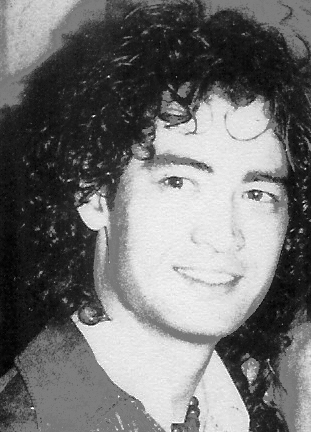
When and where did you play some of the early gigs? How was the band accepted by the audience? What clubs did you play?
As I recall the band went down pretty well. Gigging was mainly around the London area. I remember playing at the Speakeasy Club in Margaret St. London with another band called Paladin. We also supported The Idle Race and Soft Machine, but I don’t remember the venues.
What was the scene like for a band like you back then?
For us, we were all young and naïve and we really just had to go with the flow and we were taken advantage of by Adrian Miller as I mentioned earlier. Musically though it was a very exciting time. It was at the start of the progressive rock scene kicking off and music listeners were open to all types of music and genres.
“Having twin guitars was a pretty novel idea at the time”
What influenced the band’s sound?
Jeff Seopardie’s song writing, albeit with a little help from the rest of us, was a major influence on the overall band’s sound and musical direction. Mick Clarke, the other guitar player, was a huge Rolling Stones fan and that definitely had some influence. Also, having twin guitars was a pretty novel idea at the time.
What are some of the most important players that influenced your own style and what in particular did they employ in their playing that you liked?
I guess the first guitarist that captured my imagination was Eric Clapton after hearing the Bluesbreakers album. His mastery of the Chicago type electric blues then led me on quickly to other players, Freddie King, B.B. King, Buddy Guy and so on. Following on from that, and I don’t profess to be able to play anything like these guys, I got into jazz/rock fusion with guitarists like Al Di Meola, John McLaughlin, Scott Henderson, Stan Clarke, Jaco Pastorius to name but a few. Their dexterity and musicianship is mind blowing. I also enjoy flamenco, Paco de Lucia for example. All this led me on to trying to learn guitar modes to a degree and try to incorporate some of the styles into my own playing.
Hunter released a single? Do you remember it?
No I don’t actually.
How did you get signed to Bell Records?
Adrian Miller again, as I mentioned, stole the original tapes and sold them to Bell Records in the states without any of the band knowing. I know the album has been released many times on different labels but as yet not a penny has reached our bank accounts.
What’s the story behind your debut album? Where did you record it? What kind of equipment did you use and who was the producer? How many hours did you spend in the studio?
We recorded the album at De Lane Lea studios in Holborn London. I don’t remember the make of Jeff’s drums, however I played a sunburst Fender Stratocaster with a 100 watt Marshall stack, Mick played a cherry red Gibson 335 and I guess he used a Marshall too but not sure. Same goes for Paul Roberts the bass player. Paul played a Fender Precision bass, but I can’t recall his amp set up. I think the producer’s name was Louis Austin. The album was cut in one day. Money was precious in those days.
“My recollection is that it was all done in a flash”
Please share your recollections of the sessions. What were the influences and inspirations for the songs recorded?
My recollection is that it was all done in a flash, one or two takes for each song, no overdubs. The inspiration for the songs was undoubtedly Jeff Seopardie, most of the ideas were his, albeit with a little bit of a contribution from the rest of the band along the way.
Would you share your insight on the albums’ tracks?
There was no concept behind the album, just a series of songs.
How pleased was the band with the sound of the album? What, if anything, would you like to have been different from the finished product?
We were pretty pleased with the overall sound, especially considering it was recorded in one day. Thinking now though, if we had taken longer and possible over engineered the album it may have lost some of its raw energy.
What does the cover artwork symbolize?
I don’t think it symbolises anything. I just think that Adrian Miller already had a cover and wanted us to use it.
What would be the craziest gig you ever did?
That would be playing at a friend’s summer party a number of years ago with over a hundred people in attendance. The friend was looking for a band to play and I stupidly volunteered. I then had to go and find the rest of the band. Luckily I knew a local 11 piece soul band and the guitarist, bass player, keyboards, drummer and singer agreed to break away for a spell and put a rock band together for the occasion. We had to learn each number individually at home, then rehearse together twice a week at a rehearsal studio for three months before the gig. We went down a storm though, I even had a pair of knickers thrown at me on the stage, unfortunately they were men’s! It was harder work than I remembered and nerve wracking.
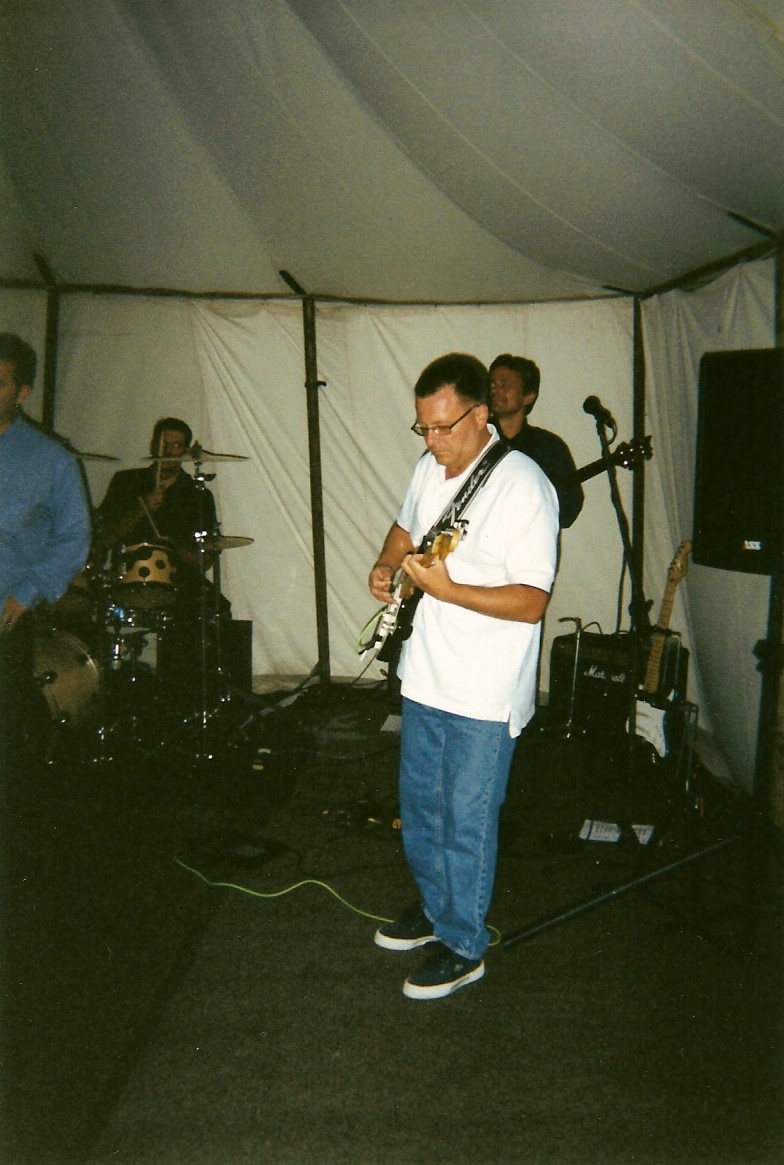
What happened when the band stopped?
We all became disillusioned with the whole set up once Adrian had cheated us and felt that was time to call it a day. Before the demise of Orang-Utan there was talk of us touring the United States supporting Led Zeppelin, which would have been an experience not to miss, but unfortunately due to the unscrupulous actions of Adrian Miller it never came to fruition. Jeff Seopardie and Mick Clarke have gone on to have successful careers in music, as for Terry “Nobby” Clarke and Paul Roberts I don’t know.
Would love it if you could tell us about projects that later occupied your life.
None to speak of really. After the demise of Orang-Utan I concentrated my energies on making a career in IT management in the investment banking sector.
Looking back, what was the highlight of your time in the band? Which songs are you most proud of? Where and when was your most memorable gig?
I enjoyed every minute I was in the band. When I listen to the album now I think it still stands up in its own right. It’s a good progressive 70’s album. If we’d have been managed properly and stayed together who knows? The stand out songs for me are ‘Magic Playground,’ ‘Chocolate Piano’ and ‘Country Hike’. The most memorable gig for me was at the Speakeasy club with Paladin. Black Sabbath were in the club watching. Now there’s a scary thought.
Is there any unreleased material by the band or any related project you were part of?
Unfortunately not.
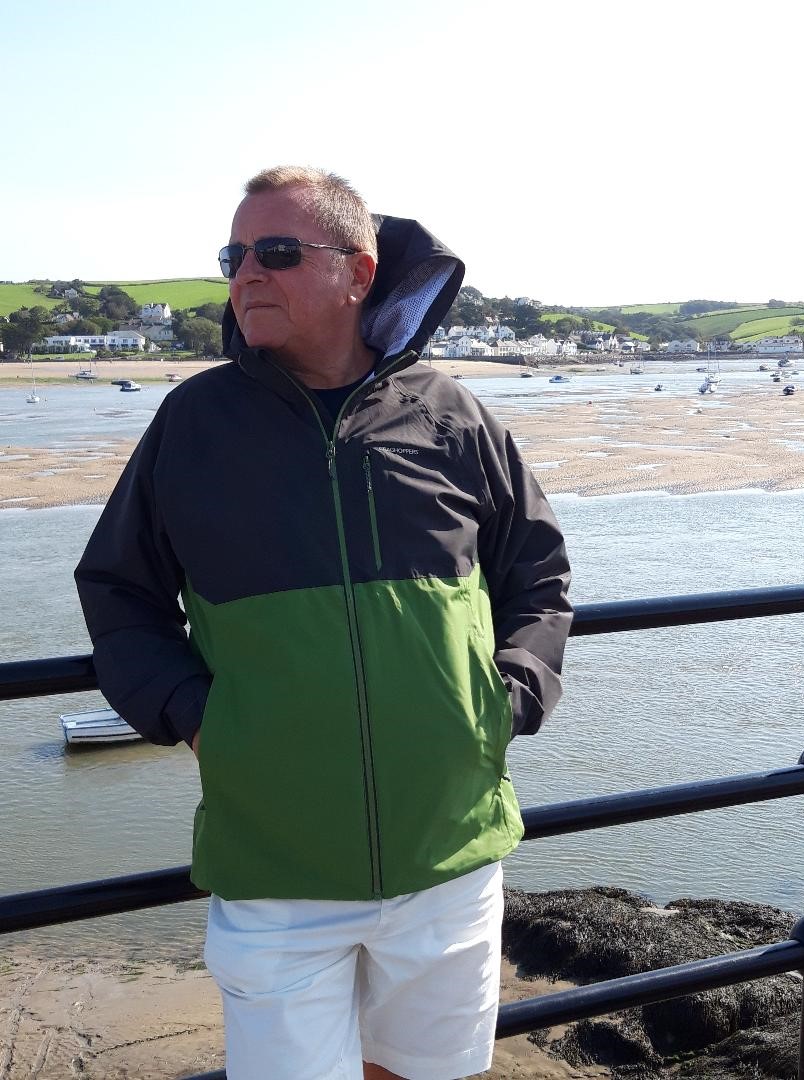
What currently occupies your life?
I’ve been happily retired now for 17 years, been married for 44 years, with two children and a few grandchildren. I still play guitar but only for fun these days. I have a couple of Fender Stratocasters, a Gibson SG, two Taylor acoustics and a Yamaha which all get used. We live about 30 miles from London and really love to travel so a lot of our time is spent seeing the world.
Klemen Breznikar
Headline photo: Sid Fairman (1971)
Guerssen Official Website / Facebook / Instagram / Twitter / Bandcamp / YouTube
Orang-Utan | Interview | Mick Clarke

